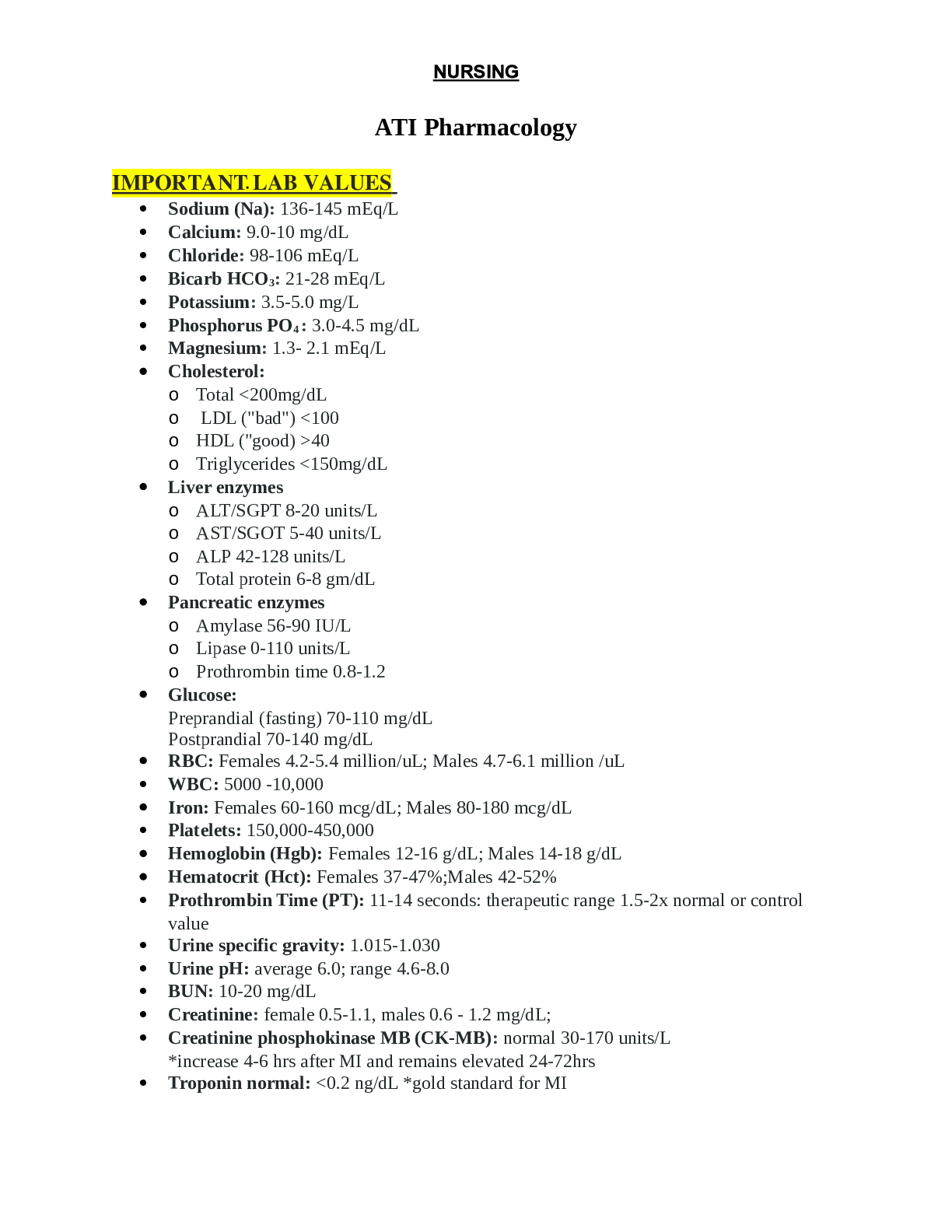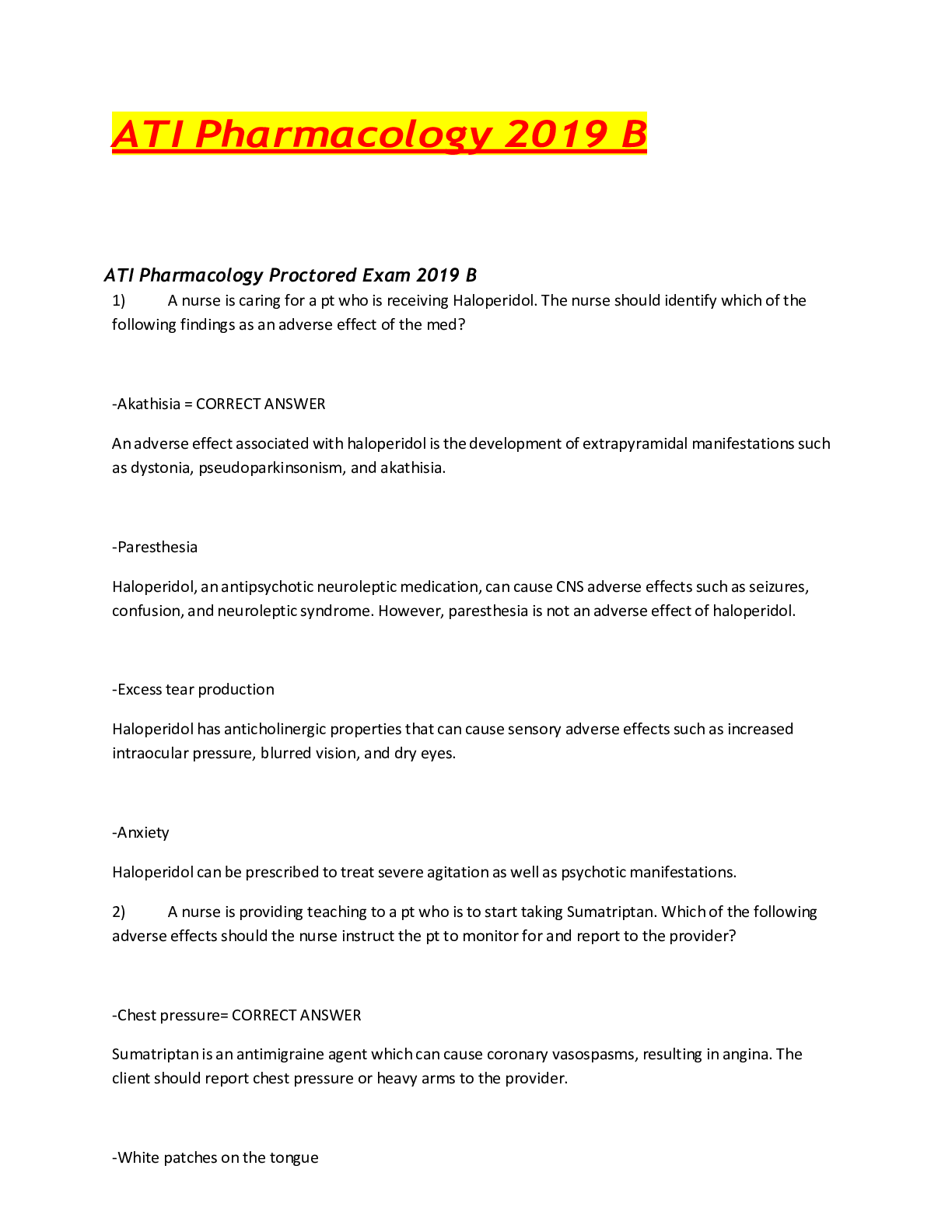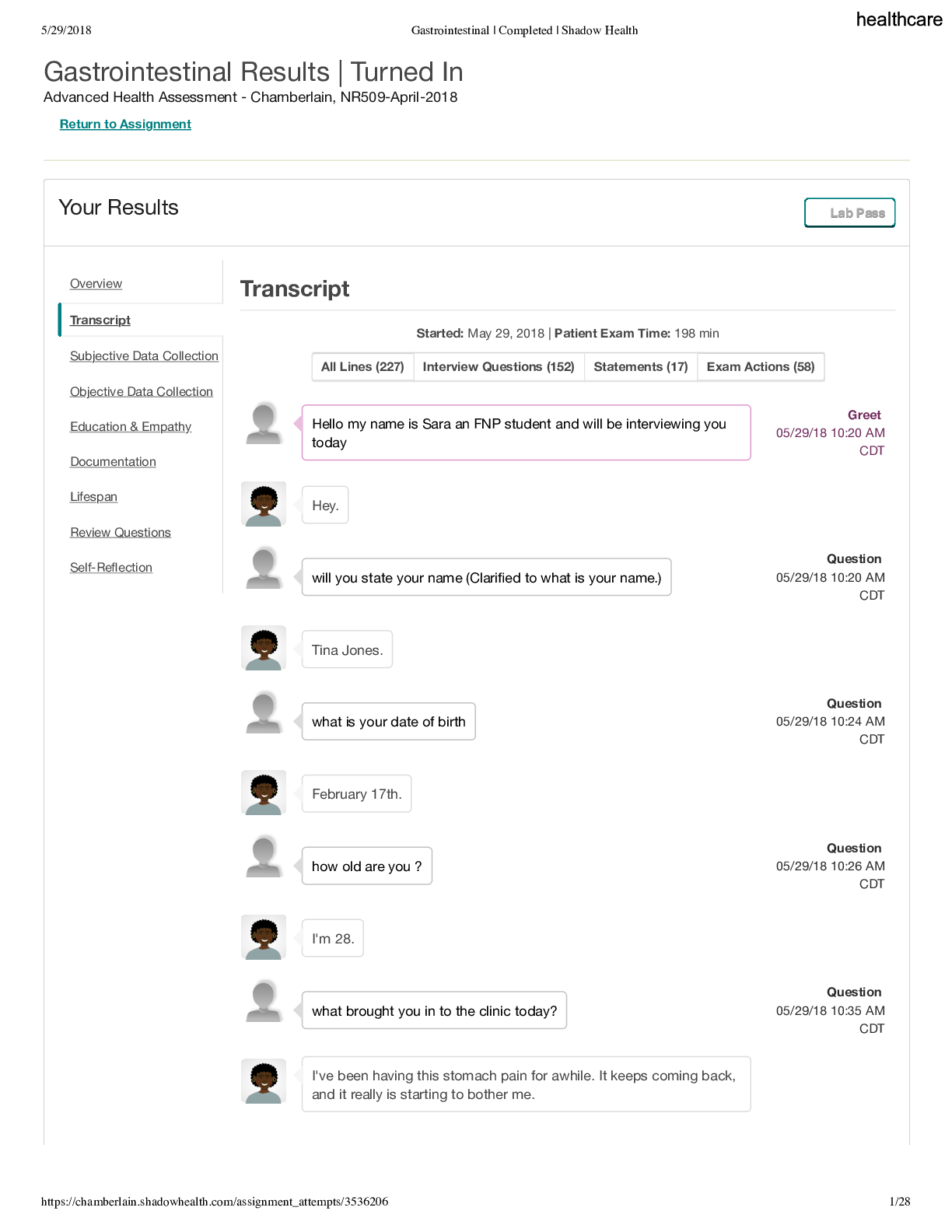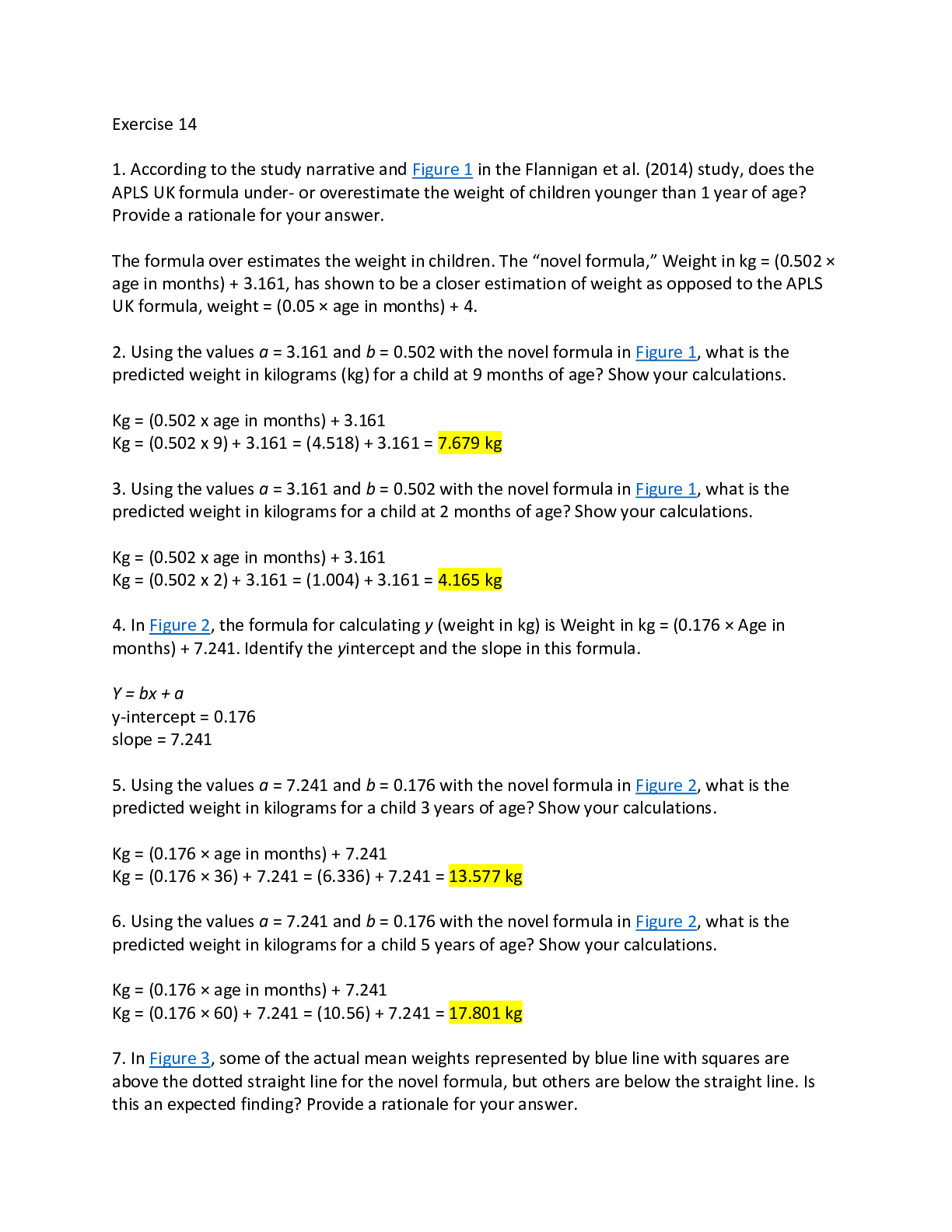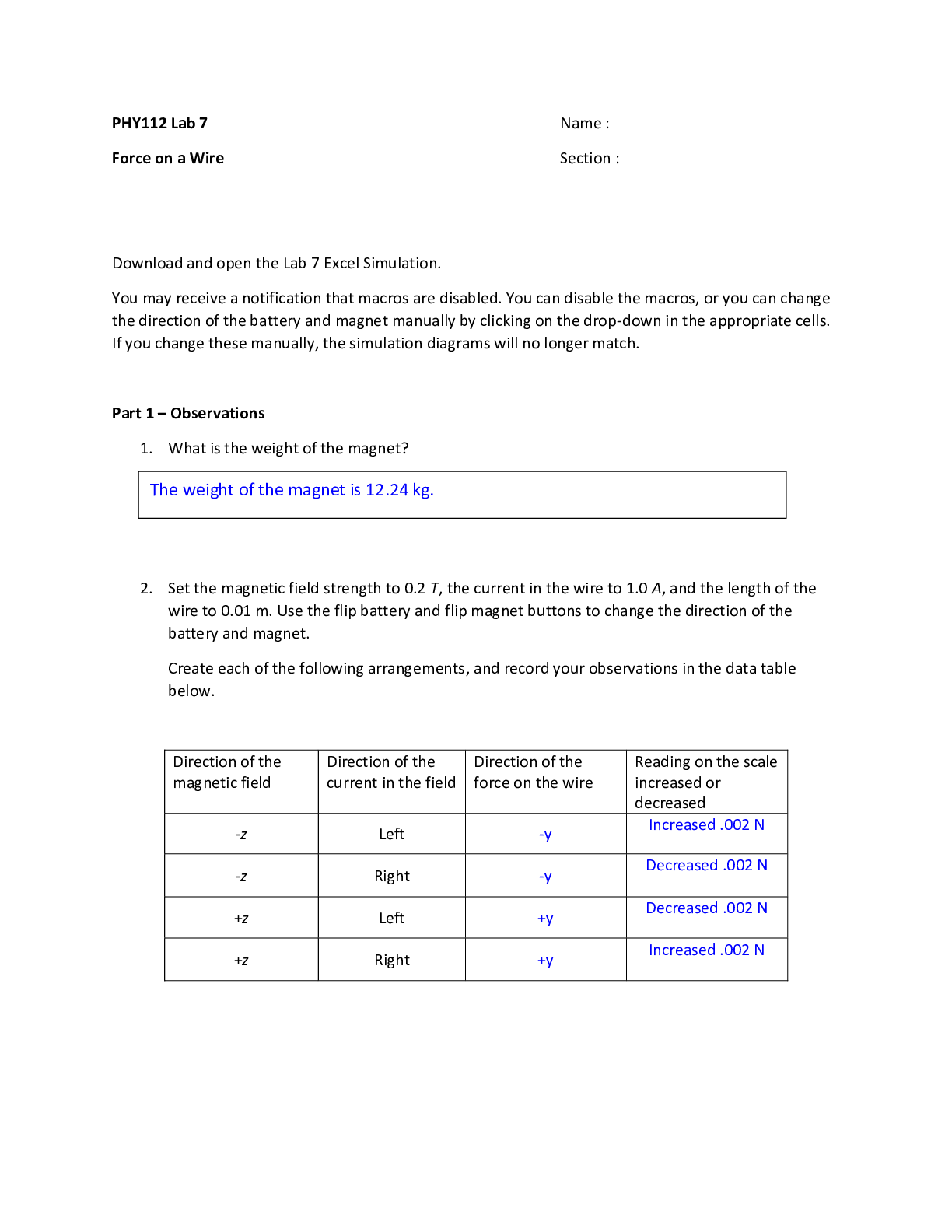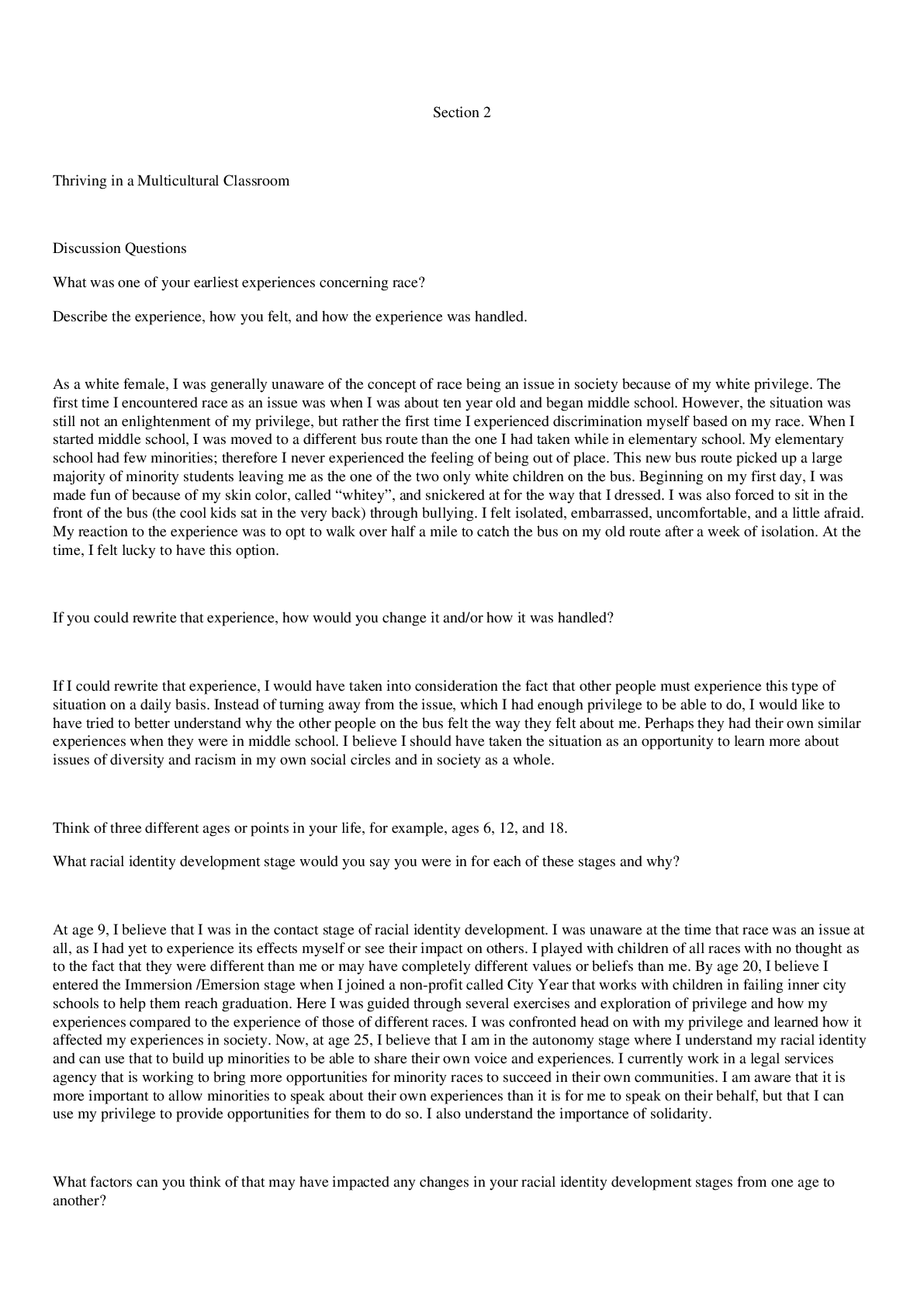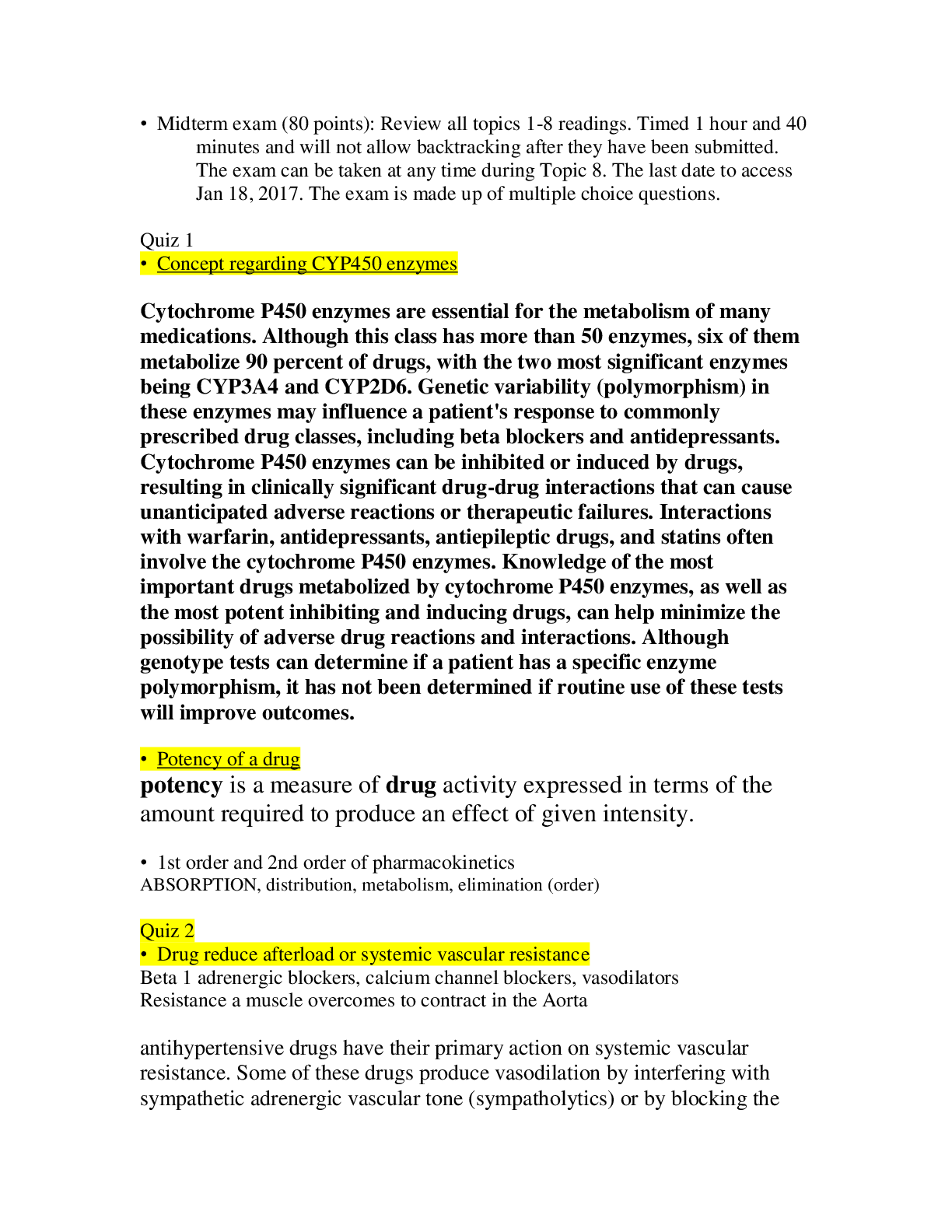*NURSING > STUDY GUIDE > Full_Updated_NR511_Final_Exam_Study_Guide June 2020 (All)
Full_Updated_NR511_Final_Exam_Study_Guide June 2020
Document Content and Description Below
NR511 Final Exam Study Guide Topics: o Common M/S disorders o Common spine disorders o Metabolic disorders o Endocrine disorders o Wounds, lacerations & bites o Common hematological disorders ... o Common male GU disorders o Testicular disorders Chapters + lectures: Wk 5: o Chapter 52: Common Musculoskeletal Complaints o Chapter 53: Spinal Disorders o Chapter 54: Soft-Tissue Disorders o Lectures o Hollier o DE Wk6: o Chapter 57: Glandular Disorders (p. 880-897 only) o Chapter 59: Metabolic Disorders o Chapter 73: Common Injuries (p.1210-1223 only) 1212-1213 table 73.1 o Review thyroid lecture again o Lectures o Hollier o DE Wk7: o Chapter 46: Nocturia in Men (p. 682) & Testicular Pain (p. 685) o Chapter 49: Prostate Disorders o Chapter 50: Penile & Testicular Disorders o Chapter 61: Hematological Disorders o Lectures o Hollier o DE Completion of study guide: IIII 1. Signs and symptoms and management of musculoskeletal sprains/strains/dislocations Signs and symptoms and management of musculoskeletal sprains/strains/dislocations Sprains: stretching or tearing of ligaments that occurs when a joint is forced beyond its normal anatomical range First degree- stretching of ligamentous fibers Second degree- partial tear of part of the ligament with pain and swelling Third degree- complete ligamentous separation Sprain- sudden injury or fall that caused acute pain and swelling that got worse over a few hours, redness and bruising, active and passive ROM decreased. Radiography to rule out fx. Strain: muscle injury caused by excessive tensile stress placed on a muscle that results in stiffness and decreased function -effects muscle or tendon that connects a muscle to a bone, complain of “pulled muscle,” severe cases cause inflammation, swelling, weakness and loss of function-surgery may be needed Management: PRICE (protect, rest, ice, compression, elevation), limitation of activity, physicaltherapy, NSAIDS, referral to ortho Dislocation- complete separation of 2 bones that form a joint Very painful and cause immobility, need immediate medical attention Referral to orthopedics for possible surgery or reduction with application of cast or splint. four cardinal signs of inflammation (erythema, warmth, pain, or swelling) -SPEW 2. Signs and symptoms and management of spinal disorders (spondylosis, stenosis, etc.) Cervical Spondylosis- neck stiffness, mild aching discomfort with activity. Pain and limited ROM occur with lateral rotation and lateral flexion of the neck toward the affected side. Weakness shoulder abduction- C5. Bicep weakness- C6. Tricep weakness-C7.Myelopathy- leg weakness, gait disturbance, balance problems, difficulty performing fine motor tasks, loss of bowel and bladder. Treatment- cervical traction, PT, pain relievers. Surgery for Myelopathy. Low back pain-Tenderness and decreased range of motion. Positive straight leg test. Treatment- NSAIDS, muscle relaxants, opioids, surgical, self-care, spinal manipulation Stenosis-pseudoclaudication causing radicular pain in the calves, buttocks, and upper thighs of one or both legs. Symptoms progress from a proximal to distal direction. Walking or prolonged standing causes pain and weakness in buttocks and legs. Stooping over helps relieve pain. Positive Romberg. Reflexes diminished. With bowel or bladder symptoms, sphincter tone may be decreased Management- surgical decompression. NSAIDS, folic acid, vitamin b12. PT-flexing the spine.Bicycling. Intermittent use of NSAIDs may be helpful, as well as folic acid or vitamin B12 supplementation in some cases depending on results of laboratory tests. Management revolves around physical therapy or an exercise program that focuses on flexing the spine. Flexion of the spine increases intraspinal volume. Bicycling is one exercise that is done with the spine in flexion. Improving abdominal muscle tone lifts the pelvis anteriorly and flexes the lumbar spine. Reduction of intra-abdominal fat is critical to achieving the objective. Achillies rupture – Thompson test 5. Initial assessment of FOOSH injury in correlation to anatomical location of radial head bone Lisa Callahan FOOSH - Falling On an Out Stretched Hand. After falling on an outstretched hand patients present after trauma with pain and swelling in the distal forearm or wrist. Numbness may be present if the medial nerve is affected. The mechanism of injury will often provide important clues to the diagnosis. The examination begins with gentle palpation to locate the area of point tenderness and includes a thorough neurovascular assessment. A radiograph of the wrist (including an oblique view) may be necessary to rule out fracture. Common fractures are the Colles fracture of the distal radius and the navicular (scaphoid) fracture of the anatomical snuffbox. It is not unusual to have a navicular fracture missed on radiography, so an orthopedic referral should be provided when the presenting complaint is pain and trauma to the soft-tissue area of the anatomical snuffbox. Scaphoid injury. 6. Assessment and management of Myofascial pain Trigger points within a muscle. Common cause of nonarticular rheumatic pain. Injections at the trigger point with saline, an anesthetic, or corticosteroid, dry needling, muscle relaxant tizanidine, NSAIDS, or cyclooxygenases-2 inhibitors. Tricyclic antidepressants. 7. Health promotion activities to prevent sport related musculoskeletal injuries Protection may refer to preventing the injury from occurring or making it less severe by wearing protective gear, such as helmets, wrist pads, and kneepads. Maintain adequate hydration and proper diet while playing sports. Stretch before the activity. Stop when you are injured, do not “tough it out”. 8. Osteopenia Osteopenia: • Osteopenia Is the precursor to osteoporosis. Osteopenia is categorized by the level of T- scores in relation to the results of a dual-energy x-ray absorptiometry scan or (DXA Scan), which measures the mineral content of bone. A T-score ranging from -1 to -2.5 would be classified as osteopenia. Pathophysiology: • It occurs secondary to uncoupling of osteoclast-osteoblast activity, resulting in a quantitative decrease in bone mass. Peak bone mass is typically achieved by males and females just prior to, or early-on in the 3rd decade of life. • Beyond age 30, bone resorption gradually becomes favored as dynamic bone remodeling continues into later decades of life. • Histologic specimens demonstrate markedly thinned trabeculae, decreased osteon size, and enlarged haversian and marrow spaces. [Show More]
Last updated: 2 years ago
Preview 1 out of 46 pages

Buy this document to get the full access instantly
Instant Download Access after purchase
Buy NowInstant download
We Accept:

Reviews( 0 )
$15.00
Can't find what you want? Try our AI powered Search
Document information
Connected school, study & course
About the document
Uploaded On
Aug 31, 2021
Number of pages
46
Written in
Additional information
This document has been written for:
Uploaded
Aug 31, 2021
Downloads
0
Views
74


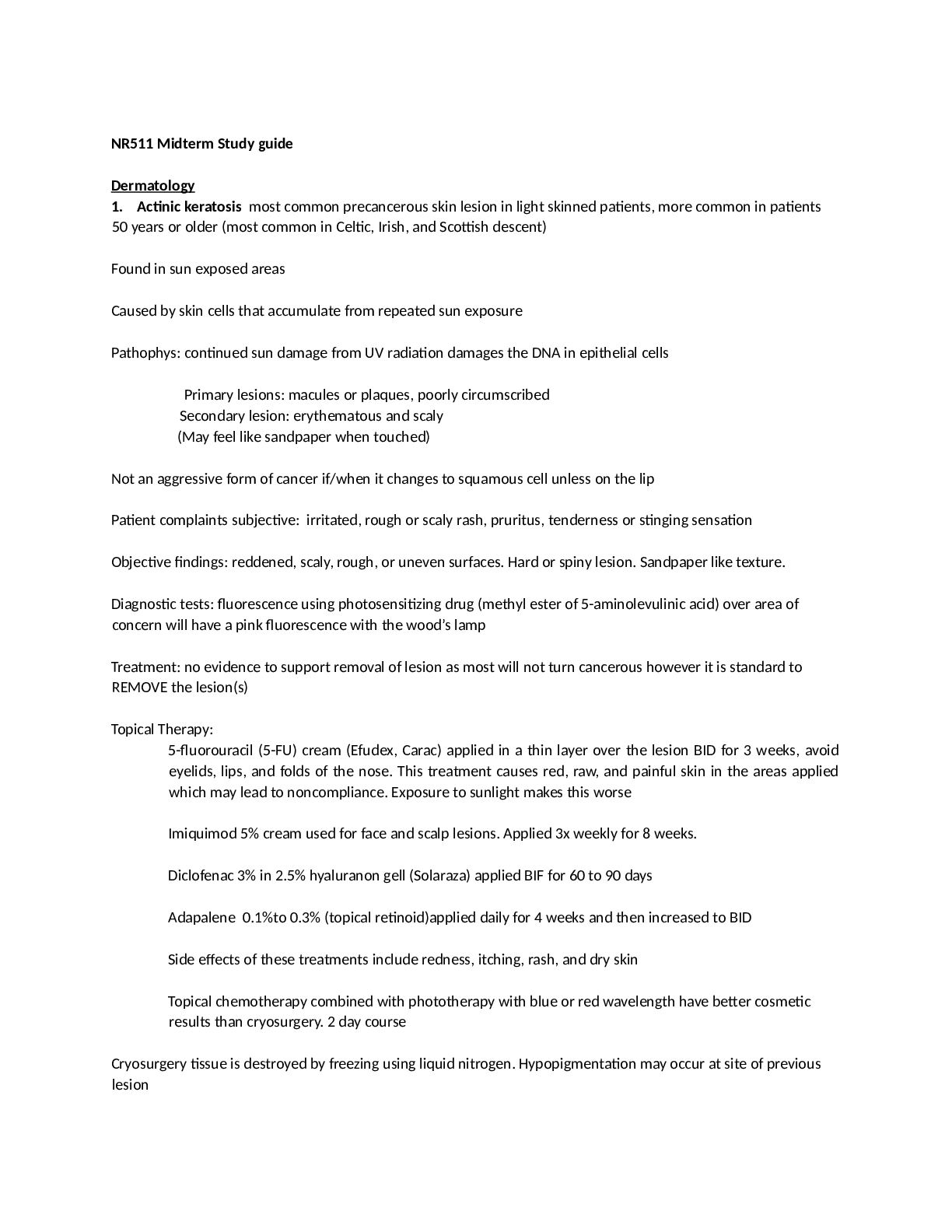
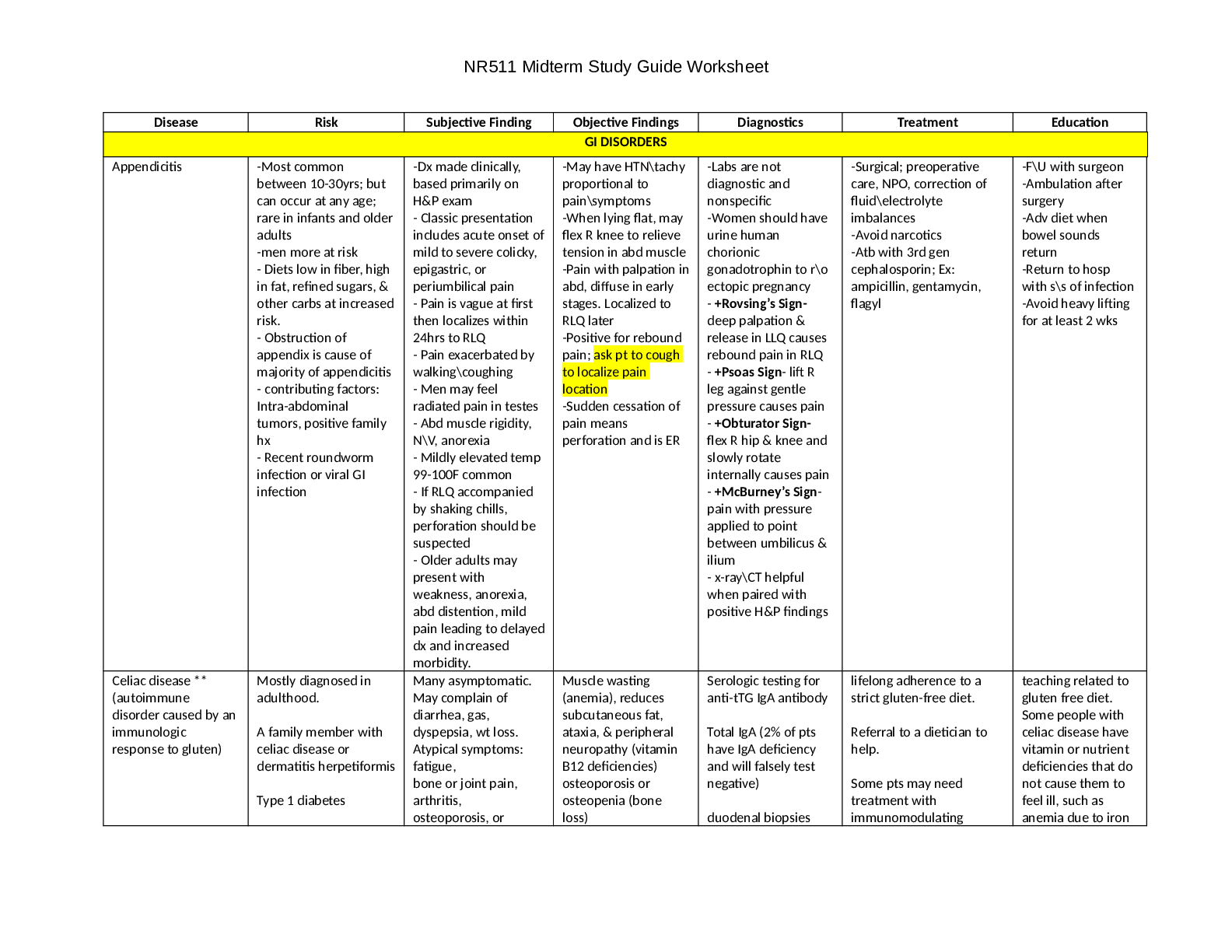



.png)
